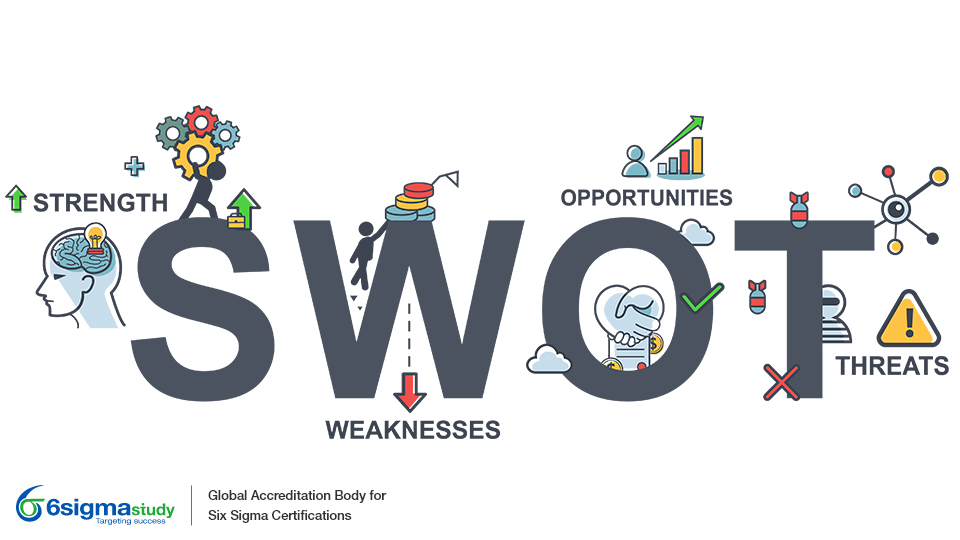SWOT Analysis
Posted by 6sigmastudy® on October 13, 2023 | Six Sigma Tools
Keywords: Six Sigma 6sigmastudy SWOT Six Sigma Yellow Belt (SSYB™) Six Sigma Green Belt (SSGB™) Six Sigma Black Belt (SSBB™) Lean Six Sigma Green Belt (LSSGB™) Lean Six Sigma Black Belt (LSSBB™) Free Articles Free Six Sigma Articles TQM Six sigma define dmaic dmadv
Maintaining a competitive edge and maximizing your business strengths is essential within a strong business strategy. Consider the possibility of possessing a well-structured and highly efficient framework to facilitate the realization of this objective. SWOT analysis could very well be the ideal tool for you.
SWOT Analysis was initially employed for corporate evaluations, but it has since gained popularity among various stakeholders, including entrepreneurs, investors, nonprofits, and government entities. The primary objective of conducting a SWOT analysis is to enhance a company's understanding of the diverse factors that influence its business decisions.
This process is applicable across organizations of all industries and at any point in time, whether it's for exploring new opportunities, evaluating internal policies, or venturing into new markets.
The origins of SWOT analysis are often attributed to the management philosopher Albert S. Humphrey. While there have been controversies surrounding its inception, it is a well-established fact that numerous researchers have made contributions to its ongoing refinement and development over time. The term is an abbreviation; SWOT represents Strengths, Weaknesses, Opportunities, and Threats.
Segments of the SWOT Matrix
The initial two categories pertain to internal factors within your organization:
- Strengths encompass areas where you excel. Examples of strengths may include patents, well-established brand names, and a strong customer goodwill, among others.
- Weaknesses encompass areas where you face challenges or limitations. For instance, the absence of patent protection, a tarnished brand reputation, and high structural costs are regarded as weaknesses.
The latter two categories are external, relating to the environment or marketplace in which your organization operates:
- Opportunities represent external elements that your organization can leverage to enhance its position. Examples of such opportunities encompass addressing customer dissatisfaction, adopting cutting-edge technology, and the removal of international trade barriers.
- Threats represent external elements that could potentially harm your organization. Examples of threats include the emergence of new regulations, heightened trade barriers, and the rise of product alternatives.
Simple rules for SWOT analysis
- When conducting a SWOT analysis, it's essential to maintain a practical perspective regarding the organization's strengths and weaknesses.
- Ensure that your SWOT analysis is comprehensive and lucid.
- Apply SWOT analysis in the context of your competitors' positions.
- Keep your SWOT analysis concise and straightforward, avoiding excessive complexity and over analysis.
Example for SWOT Analysis
The ABC Electronics company observed a four-month decline in their market performance. Consequently, they opted to conduct a SWOT Analysis to pinpoint the underlying causes. Here are the outcomes of the SWOT Analysis:
|
Strengths
|
Weaknesses
|
For more such interesting articles on Six Sigma and its concepts, please click here

